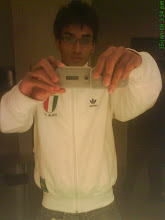Application software consists of programs designed to make users more productive and/or assist them with personal tasks. The uses of application software are; to make business activities more efficient, to assist with graphics and multimedia projects, to support home, personal, and educational tasks and to facilitate communication.
Application software is available in a variety of forms: packaged, custom, Web-based, open source, shareware, freeware, and public domain.
System software consists of the programs that control or maintain the operations of the computer and its devices. System software serves as the interface between the user, the application software and the computer’s hardware.
Two types of system software are operating systems and utility programs. Several types of utility programs are provided with an operating system. Other utility programs are available stand-alone, that is, as programs separate from the operating system.
Starting from the next paragraph, all the information, I got from the wikipedia.
Application software is a subclass of computer software that employs the capabilities of a computer directly and thoroughly to a task that the user wishes to perform. This should be contrasted with system software which is involved in integrating a computer's various capabilities, but typically does not directly apply them in the performance of tasks that benefit the user. In this context the term application refers to both the application software and its implementation.
A simple, if imperfect analogy in the world of hardware would be the relationship of an electric light bulb (an application) to an electric power generation plant (a system). The power plant merely generates electricity, not itself of any real use until harnessed to an application like the electric light that performs a service that benefits the user.
Typical examples of software applications are word processors, spreadsheets, and media players.
Multiple applications bundled together as a package are sometimes referred to as an application suite. Microsoft Office, OpenOffice.org, and iWork 08, which bundle together a word processor, a spreadsheet, and several other discrete applications, are typical examples. The separate applications in a suite usually have a user interface that has some commonality making it easier for the user to learn and use each application. And often they may have some capability to interact with each other in ways beneficial to the user. For example, a spreadsheet might be able to be embedded in a word processor document even though it had been created in the separate spreadsheet application.
User-written software tailors systems to meet the user's specific needs. User-written software includes spreadsheet templates, word processor macros, scientific simulations, graphics and animation scripts. Even email filters are a kind of user software. Users create this software themselves and often overlook how important it is.
In some types of embedded systems, the application software and the operating system software may be indistinguishable to the user, as in the case of software used to control a VCR, DVD player or microwave oven.
System software is any computer software which manages and controls computer hardware so that application software can perform a task. Operating systems, such as Microsoft Windows, Mac OS X or Linux, are prominent examples of system software. System software contrasts with application software, which are programs that enable the end-user to perform specific, productive tasks, such as word processing or image manipulation.
System software performs tasks like transferring data from memory to disk, or rendering text onto a display device. Specific kinds of system software include loading programs, Operating systems, device drivers, programming tools, compilers, assemblers, linkers, and utility software.
Software libraries that perform generic functions also tend to be regarded as system software, although the dividing line is fuzzy; while a C runtime library is generally agreed to be part of the system, an OpenGL or database library is less obviously so.
If system software is stored on non-volatile memory such as integrated circuits, it is usually termed firmware.
System Software can be classified as operating system and language processors. Operating system creates an interface between user and the system hardware. Language processors are those which help to convert computer language (Assembly and high level Languages) to machine level language. The example of language processors are assemblers, Compilers and interpreters.
